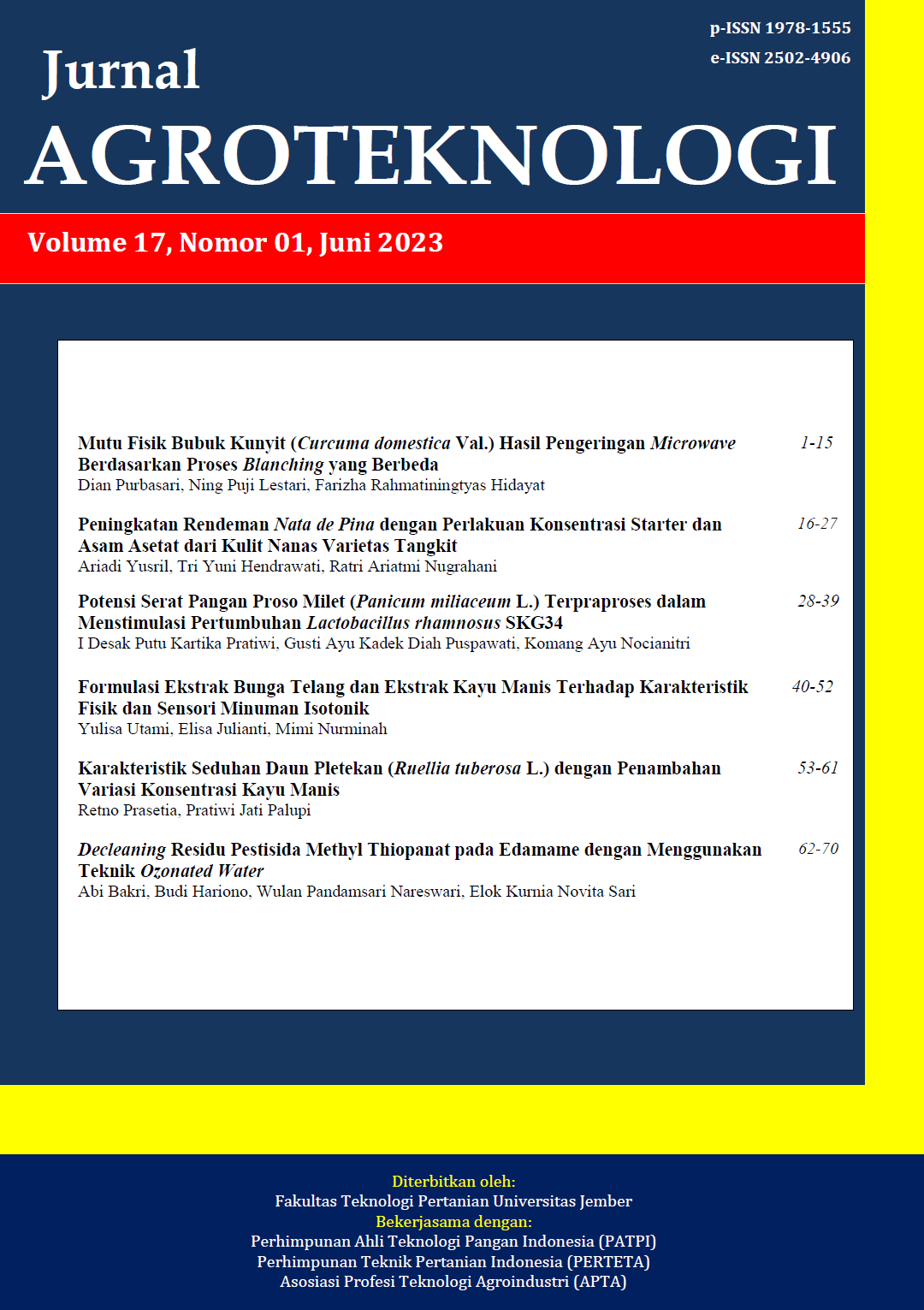Potensi Serat Pangan Proso Milet (Panicum miliaceum L.) Terpraproses dalam Menstimulasi Pertumbuhan Lactobacillus rhamnosus SKG34
DOI:
https://doi.org/10.19184/j-agt.v17i01.27811Abstract
Proso millet (Panicum miliaceum L.) was evaluated as a source of dietary fiber. Preprocessing of millet flour could increase dietary fiber. The dietary fiber is considered to provide benefits as a prebiotic. The purpose of this study was to analyze the effect of preprocessing on millet flour dietary fiber and its ability to stimulate the growth of probiotic Lactobacillus rhamnosus SKG34. The research was conducted in two stages, i.e. preprocessing millet flour and viability of probiotic bacteria (Lactobacillus rhamnosus SKG34) on different broth media. First, millet flour was made in various preprocessed method: without preprocessing, germination preprocessing, fermentation preprocessing, germination – fermentation preprocessing. Second, the viability of Lactobacillus rhamnosus SKG34 was carried out on various media broth: glucose-free MRS (control), MRS, adding dietary fibers extract from millet flour with different preprocessing. The results showed that millet flour with fermented preprocessing (F) provided the highest dietary fiber of 22.38% with a water content of 11.97% and a tannin content of 0.08%. L. rhamnosus SKG34 exhibited the highest viability when grown in MRS broth. The addition of dietary fiber extract did not significantly enhance the viability of L. rhamnosus SKG34 compared to the glucose-free MRS broth (control), which showed a viability of 5 log10 CFU/mL. Thus, it can be concluded that millet preprocessing with fermentation (F) can significantly increase the dietary fiber of millet flour. However, dietary fiber millet has no potential as a suitable prebiotic candidate for promoting probiotic bacterial growth.
Keywords: dietary fiber, lactic acid bacteria, millet flour, prebiotic, preprocessed
Downloads
Downloads
Published
Issue
Section
License
Jurnal Agroteknologi has CC-BY-SA or an equivalent license as the optimal license for the publication, distribution, use, and reuse of scholarly work. Authors who publish with this journal retain copyright and grant the journal the right of first publication with the work simultaneously licensed under a Creative Commons Attribution-ShareAlike 4.0 International License that allows others to share the work with an acknowledgment of the work's authorship and initial publication in this journal.
 JURNAL AGROTEKNOLOGI
JURNAL AGROTEKNOLOGI 








.png)
